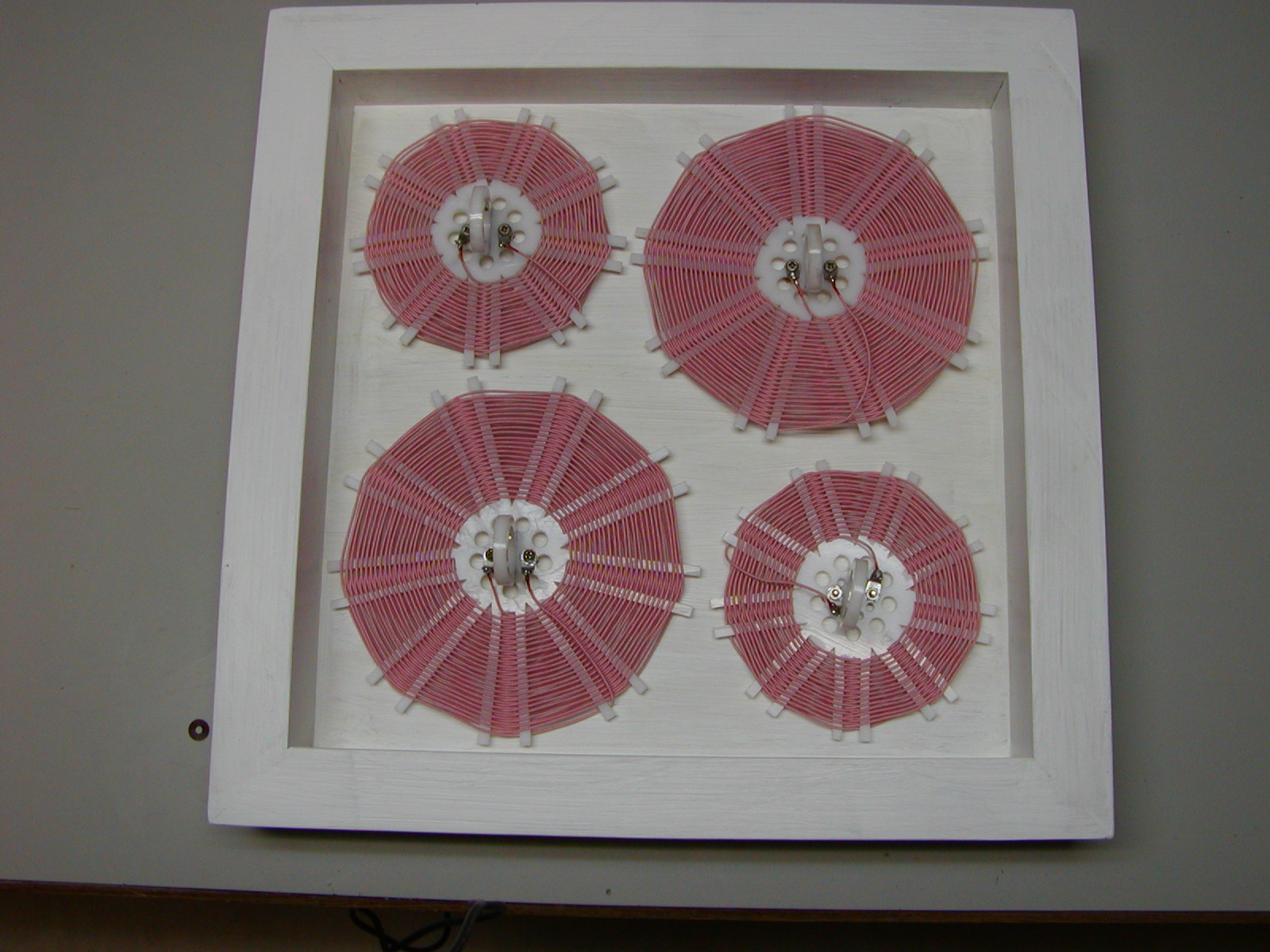About the Inductors in My Crystal Set
The above picture is of the two sets of plug-in coils used in my two band crystal set. Also shown is the storage box I made to protect the coils. I choose to wind the coils using the "Spider Web" design. They are easy to wind, easy to support, they have low distributed capacitance, and provide high Q.
The wire I used on the coils is Litz wire. Litz (derived from the German word Litzendraht for woven wire) consists of multiple strands of enamel-insulated copper wire held together by an outer covering of silk or cotton.
I used this type of wire because it has less loss from skin effect than solid wire. Skin effect refers to the tendency of current flow in a conductor to be confined to its outer surface. At low frequencies the skin effect is low and the distribution of current across the conductor is uniform. As the frequency increases, the depth to which the current can penetrate is reduced. So, as the frequency gets higher the effective AC resistance of the wire also increases. As this resistance increases, the Q decreases. When the Q decreases, the bandwidth increases which results in a lower overall selectivity of the radio.
Litz wire increases the effective surface area of the wire for a given wire gauge by using multiple strands of smaller diameter wire to make up one wire. As an example, the Litz wire that I am using in this crystal set it is constructed of 660 strands of #46 wires. The individual wire diameter (#46) is chosen for its AC current penetration at the working frequency of the crystal set. To get a rough approximation of how much better the multi-strand wire is you can see that the surface area of these 660 wires is much larger than the surface area of one equivalent copper wire thereby reducing the AC series resistance, increasing the Q, and increasing the selectivity of the radio.
The unloaded Q of these coils is over 1000 at 1000 KHz. I wound some coils with the same inductance using magnet wire on the same forms and their Q was around 200. The high cost of this wire is definitely worth the price. I purchased the wire from Kerrigan-Lewis Wire in Chicago, Illinois. They were very nice to deal with. The only problem with Litz wire is that it is expensive to build. Therefore it costs more - $91/lb U.S. (but again - worth it).
The coil forms were made from 1/8 inch thick High Density Polyethylene (HDPE) sheet. I designed them on my Computer using a mechanical engineering CAD program. Then I attached an actual size paper copy to the plastic sheet and cut them out using a scroll saw. If you would like to see what the spider web coil form looks like or you would like a pattern to build one you can check out my Spider Web Coil Form. (www.thelenchannel.com/1xtal_spider.php) On that page you can download a 1X (actual size) copy of the coil form in PDF format. (spider_coil_thelen.pdf) (430K)
Coil Data
The coils were measured with a Boonton 260A Q Meter. I showed the data from 3 points to show the effects of the distributed capacitance on the inductance.
Ref |
Coil Name |
Turns |
O. D. inches |
Inductance @ Frequency |
||
L1A |
Ant Tuner (low band) |
46 |
6.87 |
245.0 µH @ 530kHz |
258.0 µH @ 760kHz |
278.3 µH @ 1000 kHz |
L2A |
Detector (low band) |
47 |
6.93 |
251.9 µH @ 530 kHz |
265.8 µH @ 760kHz |
284.6 µH @ 1000 kHz |
L1B & L2B |
Ant Tuner & Detector (high band) |
29 |
5.12 |
86.6 µH @ 850 kHz |
90.9 µH @ 1280kHz |
109.6 µH @ 1280kHz |
